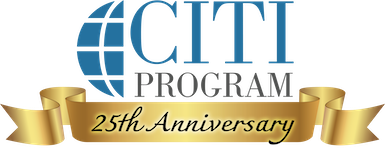- Community-Engaged Research vs. Traditional Research: Understanding the Key Differences
- Why Trust Matters in Community-Engaged Research
- Core Principles of Ethical Community Engagement in Research
- Training and Capacity Building: Empowering Community Research Partners
- Best Practices in Community-Engaged Research: From Theory to Action
- Community-Engaged Research in Practice: A Real-World Example
- References
Community-Engaged Research vs. Traditional Research: Understanding the Key Differences
Community-engaged research (CEnR) asks a simple question at the start. Who defines the problem and shapes the solution? As research institutions increasingly prioritize community engagement and health equity, many clinical investigators are rethinking how they work with the communities they aim to serve. The shift from viewing community members as passive study participants to engaging them as active partners represents more than an ethical imperative, it’s a practical strategy that improves research quality, relevance, and real-world impact.
In traditional models, the investigators set priorities, design protocols, and recruit “subjects.” In CEnR, community members co-identify needs, co-design methods, share decisions, and help interpret and disseminate results. This shift is not merely cosmetic. It changes what gets studied, who participates, how data are understood, and whether findings are adopted in real life.
Recent multi-state initiatives illustrate the model at scale. For example, the National Institutes of Health (NIH) Community Engagement Alliance has mobilized academic teams and hundreds of community partners to co-create culturally tailored outreach, research messaging, and services across diverse regions. These partnerships have improved reach and responsiveness in communities that have been historically underserved, demonstrating that engagement can be structured, resourced, and measured across many sites.
Why Trust Matters in Community-Engaged Research
Trust is not a slogan. It is measurable and it predicts behavior. A validated Perceptions of Research Trustworthiness Scale clarifies specific dimensions that drive trust, including honesty, respect, fairness, and competence. Using a measure like this allows teams to track trust over time, identify gaps, and align engagement strategies with what communities value in research relationships.
Trust also changes outcomes. During the pandemic, community advisory mechanisms embedded in community health centers strengthened equitable access to testing and services for populations facing disparities. Partners brought local insight, corrected signals that did not fit cultural context, and opened channels that researchers alone could not access.
The result was broader reach and faster uptake of evidence-based resources. In practice, trust grows when communities see that their priorities shape decisions, when benefits flow back locally, and when partners are compensated and credited for their expertise.
Core Principles of Ethical Community Engagement in Research
Ethical engagement begins with shared governance. A mixed-methods study of a large multi-state cluster trial captured what community advisory board members themselves say they need to contribute effectively. They emphasized clear roles, timely feedback loops, transparent decision rights, fair compensation, and facilitation that makes space for diverse voices. These factors were tied to stronger partnerships and smoother implementation.
Two additional principles translate well across settings.
- Equity by design. Build teams that reflect the communities involved. Share data and interim findings in accessible formats. Co-create consent language, recruitment materials, and return-of-results plans that are accurate and culturally meaningful. This reduces informational asymmetry and improves comfort with participation. Both the community and the researcher should benefit from the research.
- Accountability through evaluation. Teams should assess partnership quality, not just clinical outcomes. A recent framework for “relevant assessments” of CEnR partnerships provides practical domains and partner-reported indicators. These include influence on decisions, perceived respect, capacity gains, and sustained collaboration after the grant ends. Tracking these indicators anchors ethics in day-to-day practice, not only in policy statements.
Training and Capacity Building: Empowering Community Research Partners
Partnerships function best when all parties understand the research process, the safeguards that protect participants, and where partner input has the most influence. Well-designed training for community partners does more than transfer knowledge. It enhances research conduct by aligning roles, ethics, and data practices. It promotes trust and collaboration through shared language and clear expectations. It supports community health by tailoring methods and messages to local needs. It prevents research abuse by strengthening informed consent, oversight, and accountability. It leads to more relevant and impactful research outcomes because findings reflect real contexts and are easier to adopt.
If you wish to bolster your work with community partners, consider offering them the CITI Program’s Community Research Partner Training as part of onboarding. It orients community members to study design, roles, and ethical considerations, and it helps align expectations about shared decision making and responsibilities across the project lifecycle.
Best Practices in Community-Engaged Research: From Theory to Action
Ground your project in proven practices: this checklist maps the evidence into actionable steps for your community-engaged work.
Co-define the problem and success metrics – Begin with a listening phase that captures community priorities and lived realities. Document what “success” looks like to partners. Revisit these goals at each milestone.
Stand up a community advisory structure with authority – In many settings, this may mean partnering with an existing community advisory board rather than creating or managing a new one. Community advisory boards are most effective when they are resourced, compensated, and integrated into governance. During COVID-19 testing efforts in community health centers, advisory structures improved reach among populations facing disparities by shaping messaging, locations, and staffing models. Give the board real influence over protocol decisions, recruitment materials, and return-of-results plans. Publish the membership and remit so authority is clear.
Codify roles, rights, and compensation – Use a memorandum of collaboration that names who decides what, how conflicts are handled, and how partners are credited. The multi-state trial study shows partners want explicit decision rights, timely feedback, and fair pay for time and expertise. Build those elements into budgets and schedules. Include partner bylines on outputs when appropriate.
Share data early, in accessible formats – Return interim findings to partners on a cadence they help define. Offer dashboards or plain-language briefs that can be discussed in community spaces. Invite partner interpretation of unexpected patterns. This practice increases trust and improves the relevance of conclusions.
Measure trust and partnership quality – Build a simple plan to monitor trust over time and see which engagement actions matter. Track partner-reported indicators such as perceived respect, influence on decisions, and clarity of roles. Use the results to adjust course during the project, not only at the end. If helpful, validated tools like the Perceptions of Research Trustworthiness Scale can be considered as one option.
Invest in shared capacity – Budget for training time on both sides. Investigators can learn community history, priorities, and constraints. Partners can gain skills in research ethics, data literacy, and dissemination strategy. The recent evaluations show that targeted training raises knowledge and confidence, which improves collaboration and reduces friction during sensitive decisions. Pair formal training with shadowing or joint walkthroughs of key processes, such as consent and data collection.
Plan for sustainability from day one – Identify what can remain after funding ends. This might include a standing advisory group, a community-owned dataset or dashboard, or a microgrant program for community-led questions. Building continuity signals respect and counters the “helicopter research” pattern that erodes trust.
Community-Engaged Research in Practice: A Real-World Example
Imagine two parallel projects evaluating a new chronic disease management tool. Team A designs the protocol, informs the public, recruits, and publishes. Team B begins with community listening sessions and a co-created problem statement. Team B’s advisory group revises the eligibility criteria so they reflect local comorbidities, updates survey language, and proposes a mobile clinic schedule that matches work patterns.
Team B adds trust and partnership measures to the evaluation plan and budgets for two short training modules that align everyone on ethics and study flow. Six months in, Team B returns interim findings at a public meeting and adjusts outreach based on partner interpretation. When both teams publish, Team B also releases a plain-language brief and co-authors with community partners. Trust is higher, participation is broader, and the intervention is ready for adoption because the work reflects the realities of the people it is meant to serve.
The lesson is straightforward. Moving from participant to partner is not only an ethical choice. It is a practical strategy that improves relevance, equity, and real-world impact. Start by making trust visible and measurable. Share decisions. Build capacity on both sides. Close the loop with timely, accessible data sharing. Then sustain what you built, so the next study begins one step closer to a genuine partnership.
References
1. Mensah, George A., Lenora E. Johnson, Xinzhi Zhang, Nathan Stinson Jr., Kelli Carrington, Gargya Malla, Stephanie R. Land, Erynn Huff, Naomi Freeman, Catherine Stoney, et al. 2024. “Community Engagement Alliance (CEAL): A National Institutes of Health Program to Advance Health Equity.” American Journal of Public Health 114(S1): S12–7.
2. Compretta, Caroline E., Mona Fouad, Daniel Sarpong, LaKeisha Williams, Marie Krousel-Wood, Rodney Washington, Robert Kimberly, Wendy White, Traci Hayes, Susan Mayfield-Johnson, et al. 2024. “A New Model for Engagement and Action Mitigating COVID-19 Harm in Vulnerable Communities: The Work of Collaborative Community Engagement Alliance (CEAL) Initiatives in Three Southern States.” American Journal of Public Health 114(S1):S33-6.
3. Stallings, Sarah C., Jennifer Cunningham-Erves, Carleigh Frazier, Jabári S. Ichimura, Thelma C. Hurd, Jordan Jurinsky, Amber Acquaye, Jacquelyn S. Dalton, and Consuelo H. Wilkins. 2022. “Development and Validation of the Perceptions of Research Trustworthiness Scale to Measure Trust Among Minoritized Racial and Ethnic Groups in Biomedical Research in the US.” JAMA Network Open 5(12):e2248812.
4. Lee, Rebekka M., Kamini Mallick, James G. Daly, Vetta Sanders Thompson, Elise Hoffman, Maria Papadopoulos, and Stacey Curry. 2024. “Community advisory boards as implementation strategies to center partner and patient voice in community health centers.” Journal of Clinical and Translational Science 9(1):e14.
5. Bosak, Julie, Mari-Lynn Drainoni, Mia-Cara Christopher, Bethany Medley, Sandra Rodriguez, Sydney Bell, Erin Kim, Caroline Stotz, Greer Hamilton, Carol Bigsby, et al. 2024. “Community advisory board members’ perspectives on their contributions to a large multistate cluster RCT: A mixed methods study.” Journal of Clinical and Translational Science 8(1):e1.
6. Samuels, Elias, Donald Vereen, Patricia Piechowski, Athena McKay, E. Hill De Loney, Sarah Bailey, Luther Evans, Bettina Campbell, Yvonne Lewis, Ella Greene-Moton, et al. 2023. “Developing relevant assessments of community-engaged research partnerships: A community-based participatory approach to evaluating clinical and health research study teams.” Journal of Clinical and Translational Science 7(1):e123.
7. Morgan, Jeffrey, Scott D. Neufeld, Heather Holroyd, Jean Ruiz, Tara Taylor, Seonaid Nolan, and Stephanie Glegg. 2023. “Community-Engaged Research Ethics Training (CERET): developing accessible and relevant research ethics training for community-based participatory research with people with lived and living experience using illicit drugs and harm reduction workers.” Harm Reduction Journal 20(1):86.
8. Godfrey, Emily M., Erin K. Thayer, Laura Mentch, Traci M. Kazmerski, Georgia Brown, Molly Pam, and Morhaf Al Achkar. 2021. “Development and evaluation of a virtual patient-centered outcomes research training program for the cystic fibrosis community.” Research Involvement and Engagement 7(1):86.
9. Penn State College of Agricultural Sciences. n.d. “Core Principles of Community Engagement.” Accessed October 29, 2025.
10. U.S. Centers for Disease Control and Prevention (CDC) and Agency for Toxic Substances and Disease Registry (ATSDR). 2025. “Principles of Community Engagement, 3rd Edition.” Accessed October 29, 2025.
11. Ubri, Petry, Anmol Sanghera, Sabrina Avripas, and Ashani Johnson-Turbes. 2025. “The Community-Engaged Research Framework.” Accessed October 29, 2025.




